11 Nights / 12 Days
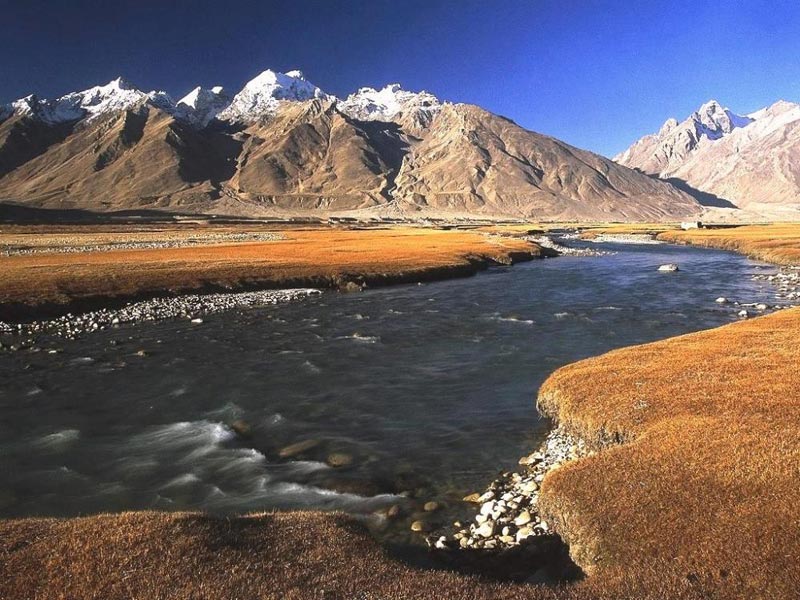
The dramatic Asiatic Ibex and localized Ladakhi Urial (Red Sheep) are the main goals of a short extension, as well as more chances of Snow Leopard (we saw fresh pug marks in the area in 2014), and Wolf - we missed some by less than a day in 2014! Add to that some wonderful, and different mountain scenery, and that we stay in a "home stay" (guesthouse) high in the hills, then this is a ‘must’ to round off the trip if you have the time. We will depart Leh on the morning that the main tour for a three night stay high in the hills at a small Ladakhi guesthouse. The three hour drive (plus several stops for photographs and wildlife) gives us an opportunity to see much more of Ladakh than we have done already. Initially, leaving Leh we drive down the Indus Valley, past the confluence with the Zanskar river near Nimmu villlage, before climbing up into the hills on a back road that is very little used - we probably won’t see another vehicle! The tarmac ends and the road winds higher and higher until, at the very end of the track, we reach a tiny hamlet at 14,500 feet which will be our home for the next three nights. Welcomed by our hosts we will settle in to our rooms before beginning a gentle exploration of the surrounding hills. We will follow the by now familiar routine of scanning with our binoculars and telescopes, whilst sipping hot tea, but now it will be from a homestead, not a campsite. The scenery is quite different from narrow valleys where we looked for Snow Leopard, the landscape immediately around the homestead is more rolling, the vistas more expansive, and many of the hills not quite so steep. We are very likely to find the Ibex in the hills very close to our guesthouse. We found a herd of 39 Asiatic Ibex in 2014, as well as fresh Wolf tracks and Snow Leopard tracks.
Extension trip Itinerary of Uley & Tsokar Lake.
Snow Leopard Trip:
This trip offers an excellent chance of seeing Snow Leopards in their natural habitat.
The remote and starkly beautiful mountain valleys of Ladakh in NW India, close to Tibet, north of the main Himalayas, are the venue. Here, bisected by the headwaters of the mighty Indus river, Ladakh’s vast, rocky, dry, seemingly barren landscapes are dotted with only occasional tiny hamlets, but with an average population density of less than two people per square kilometre, Ladakh is truly sparsely inhabited and little impacted by man. In the areas that we visit, the very few people that do live there are Buddhists of Tibetan descent, and are as warm and friendly as you’ll meet. Living in traditional mud and stone buildings, adorned with prayer flags, their flat roofs act as storage areas for fuel and cattle feed. Occasionally you see a few, small, terraced fields for wheat or at the highest altitude, barley. Domestic yaks, horses and goats graze the sparse vegetation by day, but every evening they must return to fenced enclosures to avoid nocturnal predation by the omni-present Snow Leopards and Wolves. Mostly however, this landscape is wild, rocky and untamed. It is here that we will camp in a remote mountain valley in the hope, even expectation, of seeing its most famous, most enigmatic, and most elusive inhabitant: The Snow Leopard. Hunting has never been part of the culture in this Buddhist region, so there are few, maybe no better places to try.
Our trip starts in the capital, Leh, a small town, in the Indus valley. Cut off by road from the rest of India for the five months of winter, life is sedate and far slower-paced than almost any other town anywhere on the sub-continent. It is not until the onset of summer, in May, that Leh gets busy. We will stay two nights to help us acclimatize to the altitude - at some 12,000 feet the lack of oxygen will be noticed both by day and by night. We will take gentle excursions, exploring for wildlife along the banks of the Indus in search of enigmatic birds such as Ibis bill, Solitary Snipe and Gouldenstadt’s (White-winged) Redstart. We will also visit a monastery as part of our stay. The shops in Leh offer the last chance to purchase any items that you may have forgotten.
As the main aim of this trip is to see Snow Leopard, after a full day around Leh, we head off to the mountains. Ten nights of camping are the core of the trip, in an area where Snow Leopards spend the winter. Our timing is carefully chosen to be optimal, towards the end of the mating season, and as the coldest temperatures of winter are abating. The winter snows, such as they are in this arid environment, are at their maximum extent, driving the Snow Leopards, and their prey, the Blue Sheep to lower, almost snow free elevations, thus offering us much easier access to look for them, and concentrating them in a smaller area. As cats do, they often snooze for hours during the day, so when one is spotted, it often allows prolonged viewing. We will have local guides who know the area, and the habits of the Snow Leopards, well. By keeping in radio contact with the park rangers and other local guides we will increase our chances of seeing leopards even more.
The chance for photographing Snow Leopard is moderate, as any sightings will probably be at some range, so dig scoping or a big lens and converter are the best options. Viewing with spotting scopes however can be extremely rewarding. you are encouraged to bring your own spotting scope as well. The air is very clear, and heat haze is not a problem except on the warmest of afternoons. However, as the sun sinks, the viewing conditions return to optimal just as the Snow Leopards typically arise from their afternoon nap.
Daily Routine in camp
With around 12 hours of daylight a day, the increasing day length will be useful, yet we will have plenty of opportunity to get a good night’s rest. The calls of Himalayan Snow cocks and Chokers are most likely the first sound that you will hear each day, although it could have been the mating call of a Snow Leopard, the bark of a Red Fox, or the howling of Wolves during the night. The typical day will start with hot tea/coffee delivered to your tent, followed by a bowl of hot water for a refreshing wash. Our guides will be already on the lookout for Snow Leopards, either from camp, or from a vantage point close by. You can choose to join them on the lookout, or take your time and have a leisurely start. Breakfast will be in the dining tent, where the welcoming warmth of a gas fired heater will ensure breakfast is a more comfortable and enjoyable experience in the cool of the morning. Afterwards, if no Snow Leopard has yet been spotted, we will hike out of camp to carry on searching for them. You may choose to stay around camp, or join the group. If you wish to make your hiking more comfortable you can hire a personal porter for the 10days we are camping, to carry your backpack, camera gear, tripod, scope etc. This can be arranged in Leh.
The amount of hiking you choose to do is, within certain parameters, optional. You may, if you wish, choose to stay around camp all day, and just head out when a Snow Leopard is spotted. However, it is our aim to hike a few miles every day, with the uphill sections being at a slow pace due to the altitude. You will certainly notice the reduced amount of oxygen when walking uphill. Most of the hiking will be on gentle inclines, on primitive trails, but occasionally we may want to get into a better position for viewing which may involve much steeper walking for short distances.
Most days, when we are away from camp, our staff will bring us hot tea, coffee and a snack, mid-morning and mid-afternoon, whilst in the middle of the day, we’ll get a hot lunch delivered to wherever you want..
Accommodation/Food
In Leh, all rooms are en-suite, but in winter it is common for the pipes to freeze, so it is likely that hot and cold water will be provided in buckets. The hotel is basic, but comfortable, with heating mornings and evenings. Electricity and internet can be expected, but not guaranteed. Bottled water is available for drinking. We will have three hot meals per day.
The camping is full service, and fully pottered in and out, and though basic, we will be very well looked after, with a whole team of cooks and camp helpers attending to our needs. Two person (or single) tents are provided, along with lightweight mattresses. We’ll eat In a heated dining tent where we will be served hot meals at breakfast and dinner, and sometimes lunch too, although lunch is more likely to be a picnic in the field, with piping hot soup, a hot main course and tea/coffee, brought to us almost no matter where we have walked to. Mid morning, and again mid afternoon we will be brought hot tea/coffee and biscuits. At camp there will be a toilet tent, and we will take a generator that we will use occasionally for battery charging, if and when needed.
On the extension, we stay in a traditional Ladakhi house, a great opportunity to sample the local Buddhist culture and hospitality. The accommodation is basic, and whilst the rooms are normally heated, and we will expect to have electricity, neither is guaranteed. You will be sleeping in your own sleeping bag, and the mattress may be on a bed, or on the floor.
Food
Throughout the trip we will have plenty of food, a combination of western and Indian dishes, with the latter being only moderately spiced. Potatoes, rice, pasta, bread or porridge will form the base for the meals, along with chicken, pulses and cheese. As Ladakh is cut off by road for the entire winter, there will be very few, if any, fresh vegetables.
Weather
Expect daytime temperatures to rise close to freezing, or, on sunny slopes, above that.
The early morning low to expect is around -10c to -15c (+5f to +15f) although it could be colder, exceptionally down to around -25c (minus 15f).
Clear conditions will be interspersed with cloudier, even overcast days. Expect some light snowfall occasionally, eg 2-4cm (1"-2") but we are in an area that is in a "rain" shadow, so heavier falls are unusual. We may be walking in snow occasionally.
Generally there is little wind - although a slight breeze often picks up on the afternoons.
Potential Mammals
Include the following, all of which were seen in 2014, with the exception of Lynx and Wolf - of which fresh tracks were seen, but no sightings of the actual animals themselves
Snow Leopard
Lynx
Wolf
Red Fox
Mountain Weasel
Blue Sheep (Bharal)
Asiatic Ibex
Tibetan Argali
Ladakh Urial (Red Sheep)
Woolly Hare
Royle’s Pika
Pika spp
Potential Birds
Himalayan Snowcock
Tibetan (Hill-)Partridge
Chukar
Gadwall
Mallard
Northern Pintail
Common Teal
Goosander
Rock Pigeon
Hill Pigeon
Snow Pigeon
Solitary Snipe
Common Snipe
Common Redshank
Common Greenshank
Green Sandpiper
Ibis bill
Lammergeyer
Himalayan Griffon
Eurasian Sparrow hawk
Northern Goshawk
Golden Eagle
Common Kestrel
Great Cormorant
Magpie
Red-billed Chough
Yellow-billed (Alpine) Chough
Carrion Crow
Common Raven
Brown Dipper
Blue Whistling-Thrush
Dark (Black) -throated Thrush
White-winged (Gouldenstadt’s) Redstart
Common Starling
Wall creeper
Eurasian Wren
Great Tit
White-browed (Stoliczka’s) Tit-Warbler
Horned (Shore) Lark
Tibetan Snow finch
White Wagtail
Water Pipit
Robin Accentor
Brown Accentor
Fire-fronted Serine
Brandt’s Mountain-Finch
Mongolian Finch
Great Rose finch
Little Owl
Red St
Mountain Chiffchaff
Rosy Pipit
Robin Accentor
Brown Accentor
Fire-Fronted Serin
Twite
Rose FinchesAny airfares, visa fees, insurance, personal items, tips, laundry, phone calls, all drinks other than tea coffee, potable water, additional excursions, additional meals, sleeping bags. Additional costs incurred due to flight delays/cancellations, road closures or any other factors beyond our control. Personal Porter - see below
Personal porter
You will not need to carry anything from the trail head up to camp at the beginning of our camp, nor back to the road at the end of the camp. However, on all days whilst we are searching for the Snow Leopards, anything that you want with you, such as your camera, tripod, telescope, small daypack with extra clothing layers, etc, you will have to carry. However, you may, for a small additional fee, opt to hire your own personal porter for the duration of the camp (10days). This will be organized for you on request in Leh, at the start of the trip.
Flights
Exotic Travel can help book your flights. The only way to get to Leh in the winter is to fly from Delhi (to Leh). It is a short (approx one hour) flight on a modern jet. The airstrip in Leh is a large military one, has a good approach and is well maintained.
i) Baggage allowance Delhi-Leh is only 15kg per person, unless you have a through ticket on the same airline internationally. Jet Airways or Air India are the only two airlines that fly to Leh. However, excess baggage charges are only £3 ($5) per kilo, and all decent cold weather gear is very lightweight, plus you’ll want to wear a fair bit of that on the plane to ensure it arrives with you and so as you can wear it as you walk from the plane to the terminal on arrival in Leh.
ii) At the time of writing, both Jet Airways (Jet Konnect) and Air India only fly into Leh (from Delhi) on some days of the week. However, both airlines fly into Leh on day-one of the tour, Fri 27 Feb, and if you go on the extension, both airlines fly out of Leh on the final day, Mon 16 Mar. However, if you are not doing the extension, then only Jet Airlines (Jet Konnect) fly out of Leh on the final day of the main part of the tour. Air India departs Leh the following day (Friday 13th).
Additional Advice
Delays at Leh airport are always possible due to weather (although we experienced none in 2014). However, at the end of the tour, in case of delays flying out of Leh, you may wish to plan an overnight stay in Delhi. Exotic Travel can book you in at our preferred Airport hotel.
Lithium Batteries (eg spare camera batteries) - must be in your checked luggage for the return flight from Leh back to Delhi.
Tips: these are an entirely personal choice. Our guidance is each guest gives a tip of $10 per day, to be shared equally amongst all the local guides, cooks, porters, camp assistants, with a smaller proportion reserved for the hotel staff and drivers in Leh. Your tour leader will assist. If you have hired your own personal porter, then any tip that you wish to give will be in addition to the above, and you should give that directly to the porter. We suggest $25 would be an appropriate tip.
Equipment:
The following three specialist items are particularly noteworthy..
i) Down sleeping bag - get the best 4-season one you can. Add a silk liner for extra warmth.
ii) Down jacket - should be roomy, comfortable, of high quality
iii) Walking boots - stout, winter-rated, walking boots, capable of taking two pairs of quality socks comfortably. Ensure you have walked a few miles in them (at least) before bringing them!
Plus..
Gloves, mittens, and hand warmers
Warm hat, plus a ‘peaked hat’/’baseball cap’
4+ pairs thin thermal socks
4+ pairs thicker thermal socks
2x thermal base layer (top and bottom)
2x thermal mid layer (top)
2 pairs Hiking trousers (usa = pants!)
Fleece jacket
Thin down jacket/vest (optional, in addition to the down jacket above)
Lightweight/micro weight ‘windbreaker jacket’ eg single skin Gore-tax
Lightweight/micro weight ‘windbreaker over trousers’ (usa= rain pants) eg single skin Gore-Tex
Pillow case - to stuff clothes in overnight
Small flashlight/torch, with hook/strap to hang from roof of ten
Spare batteries for anything electrical (Lithium are best in cold temps)
Binoculars
Telescope, tripod
Camera + lenses / dig scoping kit
Sunscreen, sunglasses
Essential medications for at least one week longer than the intended duration of the trip
Personal Toiletries.
Delhi - Leh Arrival transfer to Hotel, Full day rest to acclimatize altitude. Overnight Hotel Grand Dragon.
Early morning birding around Indus River and Visit Thiksay monastery. Overnight Hotel Grand Dragon.
Drive to Zingchen 45 minutes drive , this is entry point to Rumbak (Hemis national Park) walk to camp site 01, and half hrs. Overnight Camp.
Hemis National Park. Overnight Camp.
Hemis National Park. Overnight Camp.
Hemis National Park. Overnight Camp.
Hemis National Park. Overnight Camp.
Hemis National Park. Overnight Camp.
Hemis National Park. Overnight Camp.
Hemis National Park. Overnight Camp.
Trek back to Zingchen and drive back to Leh, Overnight Hotel Grand Dragon.
Leh - Delhi - Transfer to Leh air port to catch the flight.
Exotic Travel is identified as one of the largest Tour Operators from Leh Ladakh, Jammu and Kashmir. Since our inception in the year 2003, we have been striving to bring in better facilities and services for the tourism sector and to promote eco-tourism. With a branch office in the capital of India, Delhi, we boast of proficiency in catering to the various parts of this multicultural country. We are a reliable name for Car & Coach Rental, Event Organizers, Hotel Booking Services, and India Tours, specializing in providing services for Trekking, Motor Biking, and Cultural Cycling all over India.
Operational from Leh Ladakh, Jammu and Kashmir, Exotic Travel is a distinguished name in the tourism and hospitality industry. We have a team of qualified and professional organizers and planners working for us who excel at providing the desired comfort and convenience in a journey. Our travel managers have strategically designed packages and itineraries for Group holidays, Adventure Tours, and Wildlife Tours for all of India. We have earned a specialization in providing services for Trekking, Motor Biking and Cultural Cycling in Leh Ladakh. Give us a call to learn more about our services that we offer at reasonable rates. We are capable of offering customized services as well. Read More...

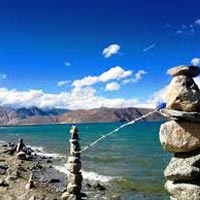 9D/8N
9D/8N
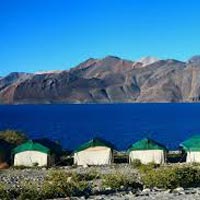 11D/10N
11D/10N
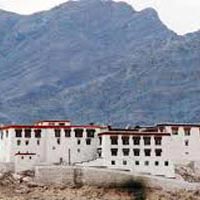 8D/7N
8D/7N
 11D/10N
11D/10N
 23D/22N
23D/22N
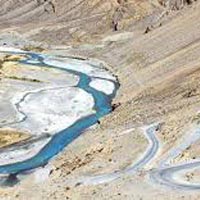 30D/29N
30D/29N
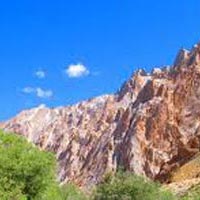 20D/19N
20D/19N
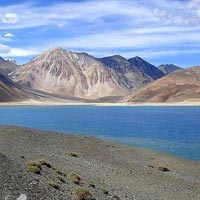 12D/11N
12D/11N
 11D/10N
11D/10N
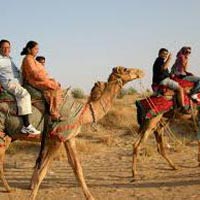 12D/11N
12D/11N
Camel Safari in Rajasthan Tour
New Delhi - Jodhpur - Jaisalmer - Ranakpur - Udaipur
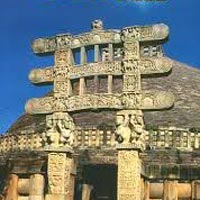 12D/11N
12D/11N
Back to Madhya Pradesh Tour (Central Ind..
Gwalior - Jhansi - Jabalpur - Bhopal - Tikamgarh - Chhatarpur - Kanha - Pachmarhi
 12D/11N
12D/11N
 12D/11N
12D/11N
Chardham Yatra (Ex Delhi) 11 Nights / 12..
Haridwar - Garhwal - Uttarkashi - Rudraprayag - Chamoli - Rishikesh
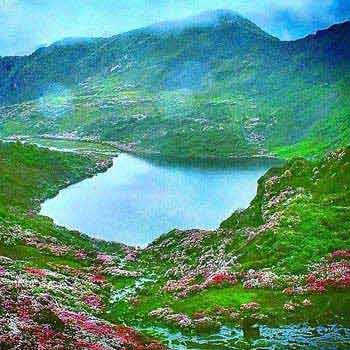 12D/11N
12D/11N
Guwahati - Kaziranga - Shillong - Tawang - Cherrapunji - Bomdila - Bhalukpong
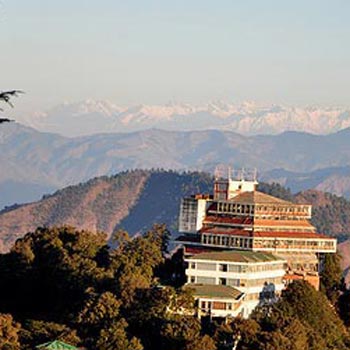 12D/11N
12D/11N
11nights/12days Himachal Punjab Romantic..
Chandigarh City - Shimla - Manali - Dharamshala - Dalhousie - Amritsar - Ludhiana -..
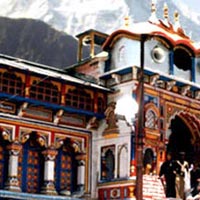 12D/11N
12D/11N
Haridwar - Rishikesh - Uttarkashi - Rudraprayag - Chamoli - Joshimath - Srinagar - ..
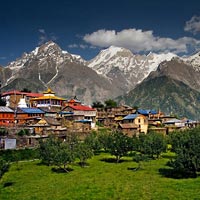 12D/11N
12D/11N
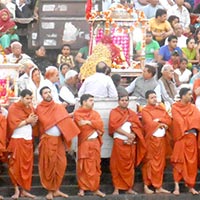 12D/11N
12D/11N
Haridwar - Rudraprayag - Rishikesh - Uttarkashi - Chamoli - Gangotri
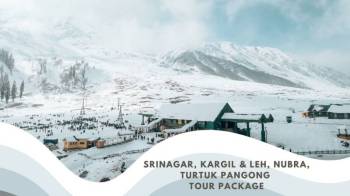 9D/8N
9D/8N
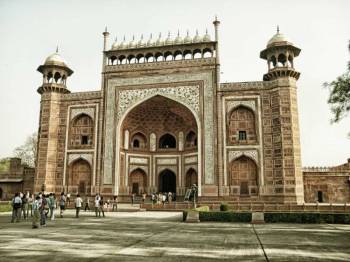 11D/10N
11D/10N
10 Nights Uttar Pradesh Tour Package Fro..
New Delhi - Agra - Prayagraj - Lucknow - Mathura - Varanasi - Ayodhya - Vrindavan -..
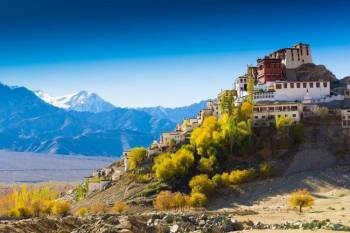 10D/9N
10D/9N
Jammu And Kashmir With Leh Ladakh Tour P..
Srinagar - Pahalgam - Leh Ladakh - Kargil - Gulmarg
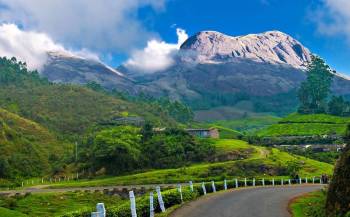 4D/3N
4D/3N
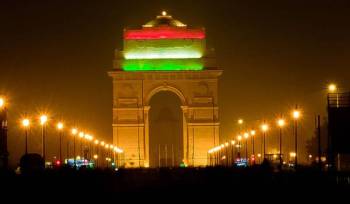 5D/4N
5D/4N
Delhi - Mathura - Vrindavan - Agra Tour ..
New Delhi - Agra - Mathura - Vrindavan
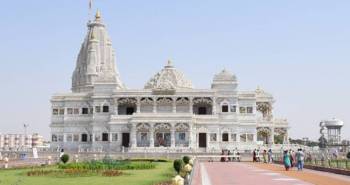 5D/4N
5D/4N
Golden Triangle Tour With Mathura 4 Nigh..
New Delhi - Jaipur - Agra - Mathura
 5D/4N
5D/4N
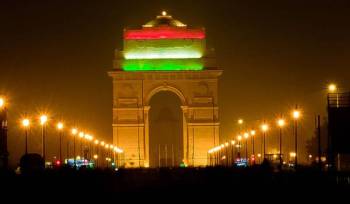 5D/4N
5D/4N
 5D/4N
5D/4N